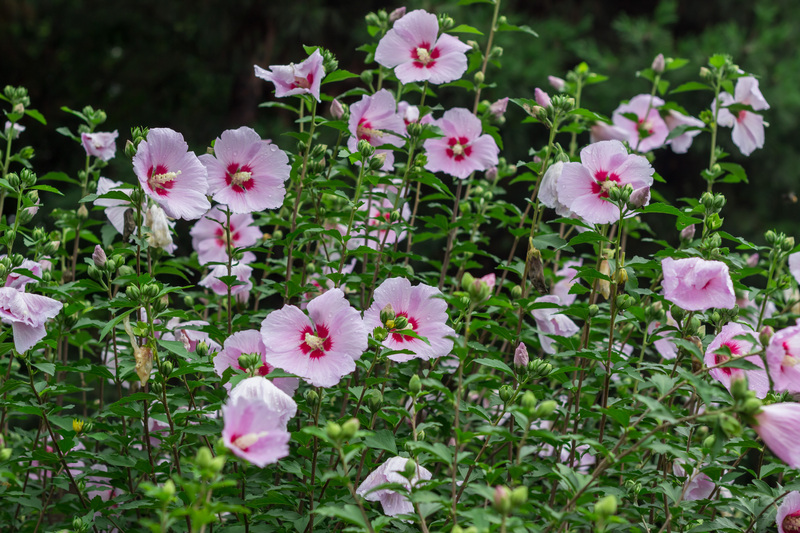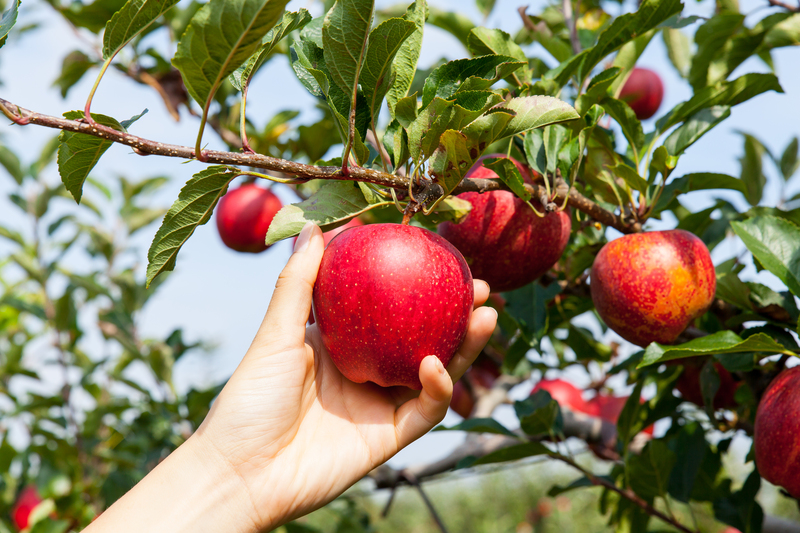Crafting Distinctive Hedge Shapes and Trimming Styles
Posted on 29/09/2025
Crafting Distinctive Hedge Shapes and Trimming Styles: A Comprehensive Guide
Are you eager to elevate your garden's curb appeal or create a statement landscape feature? Mastering hedge shaping and trimming styles can transform ordinary greenery into living sculptures, enhance privacy, and boost your home's value. This in-depth guide explores everything you need to know about crafting distinctive hedge shapes and trimming styles--from basic principles to advanced techniques and trending designs.
- The Benefits of Hedge Shaping and Trimming
- Basic Principles of Hedge Shaping
- Popular Hedge Trimming Styles and Shaping Techniques
- Topiary: The Art of Creative Hedge Sculpting
- Modern and Trending Hedge Design Ideas
- Essential Tools and Tips for Mastering Hedge Trimming
- Aftercare and Year-Round Hedge Maintenance
- Conclusion: Cultivating Character with Unique Hedge Designs
The Benefits of Hedge Shaping and Trimming
Why invest time in crafting unique hedge shapes? Besides adding a distinctive flair to your landscape, the benefits of structured hedge trimming extend beyond aesthetics:
- Enhanced Curb Appeal: Well-shaped hedges make your property more attractive and welcoming, setting it apart from neighbors.
- Increased Privacy: Dense, well-trimmed hedges create natural barriers against peering eyes and noise.
- Healthier Plants: Pruning encourages vigorous new growth and allows for better air circulation.
- Wildlife Support: Thoughtfully shaped hedges provide shelter and food for birds, insects, and small mammals.
- Property Value: Creative hedging can boost your home's valuation and saleability.
In essence, distinctive hedge trimming is both an art and a science - delivering beauty, function, and sustainability all at once.
Basic Principles of Hedge Shaping
Before diving into advanced hedge shaping and trimming styles, it's crucial to understand the essential principles. Applying these foundational guidelines helps maintain plant vitality and supports stunning results.
Understand Your Hedge Species
Not all hedges are created equal! Evergreens like boxwood, privet, and yew respond well to shaping, while some flowering or fast-growing deciduous species may need gentler treatment. Research your hedge's growth habits, ideal pruning times, and sensitivity to heavy cutting.
Timing is Everything
Best practice: Prune most hedges in late winter or early spring before active growth begins. However, fast-growing or formal hedges may require a mid-and late-summer tidy-up. Avoid heavy pruning during drought, heatwaves, or frost.
Respect the Natural Shape
Even when crafting dynamic shapes, preserve healthy growth by tapering hedge sides slightly -- broader at the base and narrower at the top, allowing sunlight to reach all foliage and preventing thinning at the bottom.
Sharp Tools, Smooth Cuts
Always use clean, sharp shears or power trimmers to ensure precise, healthy cuts. Dull blades tear branches, inviting disease and stress.
Popular Hedge Trimming Styles and Shaping Techniques
There's a world of choice when it comes to distinctive hedge trimming styles. Whether you prefer clean lines, gentle curves, or whimsical topiary, tailoring techniques to your vision and hedge type is key.
1. Formal Hedge Shapes
- Rectilinear (Box) Hedges: Classic and timeless, these are cut with perfectly straight sides and flat tops. Boxwood, hornbeam, and privet are popular candidates. Perfect for garden borders and statement entrances.
- Rounded or Curved Hedges: Achieve a soft, organic look by trimming the top or sides in gentle, flowing curves. These work well with yew, laurel, or smaller-leafed shrubs.
- Pyramidal and Conical Forms: Add drama with geometric silhouettes--ideal around formal gardens, pathways, or as garden focal points.
2. Informal and Naturalistic Hedges
- Loose, Flowering Hedges: Allow natural shapes to shine, just lightly pruning for width and height. Encourages blooms and wildlife.
- Wavy and Scalloped Edges: Soften boundaries with undulating lines or staggered heights--a popular trend in modern garden design.
3. Customized Patterns and Creative Forms
- Arched and Domed Hedges: Perfect for framing pathways, entrances, or focal features.
- Spiral and Helix Trims: Create visual interest using precise cutting--ideal for focal columns or paired with topiary spheres.
- Multi-Tiered or Stepped Hedges: Differing heights add drama along driveways, patios, or terraced landscapes.
Topiary: The Art of Creative Hedge Sculpting
Topiary: The ultimate form of distinctive hedge shaping, where plants are meticulously clipped into defined shapes, figures, or even representational art. This living art form dates back centuries but remains popular for those seeking a truly personal or whimsical touch.
Popular Topiary Themes:
- Geometric shapes (balls, cubes, cones)
- Animal figures - rabbits, birds, or even fantastical creatures
- Letters, numbers, or abstract patterns
- Garden architectural forms - spirals, obelisks, or arches
Topiary is best attempted with slow-growing, densely-leaved evergreens like boxwood, holly, or yew. Start with simple curves, gradually working up to complex figures as your skills grow.
Tips for Beginner Topiarists
- Start Small: Try spheres or cones before tackling detailed animals or abstract art.
- Use Frames or Stencils: Wire frames can guide your cuts and help outline complex shapes.
- Be Patient: Allow several seasons for living plants to fill out and support more intricate designs.
Modern and Trending Hedge Design Ideas
Today's garden designers are pushing the boundaries of distinctive hedge shaping by combining traditional approaches with innovative, eye-catching twists.
Trending Hedge Styles for Contemporary Gardens
- Layered or Stepped Hedges: Staggering height or combining different species for color contrasts and textural interest.
- Integrated Lighting: Pruning hedges to accommodate built-in LED strips or spotlights--dramatic illumination after dark.
- Edible Hedges: Combining form with function using species like rosemary, bay, or lavender for aromatic, browsable boundaries.
- Mixed-Hedge Designs: Alternating leaf colors, shapes, or flowering times for dynamic, year-round interest.
- Living Art Walls: Using precise trimming to "draw" patterns, chevrons, or even murals into flat hedge surfaces.
Sustainable and Wildlife-Friendly Hedges
- Native Species: Favor regional plants for better disease resistance, lower maintenance, and enhanced habitat support.
- "Loose Formal" Styles: Blending sharp lines with wilder edges to support pollinators and small animals.
Essential Tools and Tips for Mastering Hedge Trimming
Achieving distinctive hedge trimming results depends on using the right equipment and techniques. Here's your go-to toolkit for professional-quality cuts:
- Manual Hedge Shears: Ideal for detail work and finishing touches.
- Electric or Battery Hedge Trimmers: Perfect for large, formal hedges or quick shaping.
- Loppers and Pruning Saws: For removing thick, woody stems or rejuvenating older hedges.
- String Lines and Stakes: To ensure straight edges and consistent heights.
- Wire Topiary Frames: For intricate shapes and complex topiary projects.
- Protective Gear: Gloves, eye protection, and sturdy shoes are essential!
Best Practice Trimming Tips
- Step Back Frequently: Pause periodically to assess your progress and symmetry from multiple angles.
- Don't Over-Prune: Remove only a third of new growth at a time to avoid stressing the plant.
- Taper the Sides: Ensures good light penetration and a full, healthy hedge from base to tip.
- Clean Up Thoroughly: Dispose of clippings and disinfect tools to prevent disease spread.
Aftercare and Year-Round Hedge Maintenance
Beautiful, sustainable hedge shapes require year-round attention. Follow these maintenance principles to keep your creations healthy and thriving:
- Watering: Deep watering during dry spells, especially in the first few years or after heavy trimming.
- Mulching: Apply organic mulch around the base to retain moisture and suppress weeds.
- Feeding: Balanced, slow-release fertilizers in spring support lush regrowth after pruning.
- Pest and Disease Checks: Regularly inspect for signs of infestation or rot--healthy hedges are better able to maintain their shape.
- Winter Protection: In regions with severe cold, shield tender hedge species with covers or windbreak netting to prevent frost damage.
Proper aftercare ensures not only the longevity of your unique hedge shapes but their ongoing vigor and ornamental appeal.
Conclusion: Cultivating Character with Unique Hedge Designs
Crafting distinctive hedge shapes and trimming styles is a rewarding way to express creativity in your garden, providing lasting visual interest, privacy, and distinction to any landscape. By following sound horticultural techniques and embracing innovative design, anyone--from novice gardeners to seasoned horticulturists--can transform humble hedges into living works of art.
- Start with the right species for your region and desired shape.
- Invest time in proper trimming techniques and tool maintenance.
- Experiment with shapes and styles--don't be afraid to get creative!
- Maintain your hedges regularly for lasting structure and beauty.
Ready to embark on your journey of hedge artistry? There's no better time to define your space, unleash your imagination, and create a greener, bolder, and more distinctive garden for years to come.
For more tips on unique garden features and expert advice on shaping and trimming hedges, follow our blog and share your own hedge masterpieces with our community!



